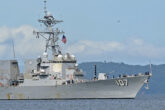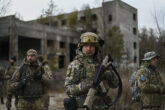October 29, 2018
Surviving the U.S. Withdrawal From the Iran Nuclear Deal: What We Do—and Don’t—Need to Worry About
In a September interview with Germany’s Der Speigel, Iranian Foreign Minister Mohammad Javad Zarif stated that if Europe could not meet Iran’s demands for sustained economic benefits following the U.S. withdrawal from the nuclear deal, Tehran would be within its rights to resume some of its nuclear activities. In other words, Iran could expand its nuclear program without walking away from the agreement, known as the Joint Comprehensive Plan of Action (JCPOA). While it is unclear whether this was mere bluster from Tehran’s top diplomat — and whether the remaining parties to the deal would agree with his interpretation of its text — it is the latest in a series of threats and announcements, since the United States exited the JCPOA, that Tehran remains ready to quickly resume activities halted under the agreement.
Of course, such rhetoric is primarily meant to put pressure on Europe and other remaining deal participants to offset U.S. economic sanctions. Conventional wisdom is that Iran appears willing to stay in the deal, at least for now.
But this does not mean the United States should not take Iran’s threats seriously or refrain from planning for their occurrence. Indeed, U.S. sanctions on Iran’s oil and banking sectors — which are the sanctions most likely to put the squeeze on Iran’s economy — don’t go into effect until November 5, at which point Iran could carry out its threats. In addition, while Europe has taken a few steps to try and blunt the impact of the U.S. pressure campaign and save the deal, such measures will probably have a small effect on reducing the economic pain on Iran. Thus, there is ample reason to worry that Iran could still make good on these threats, sparking an escalatory cycle and increasing the risk of miscalculation and conflict.
This would not be the first time. Beginning in late 2005, Iran removed International Atomic Energy Agency (IAEA) seals and began to resume its fuel cycle activities following a pause in response to the exposure of its then-covert uranium enrichment and reactor-related facilities. Over the next decade, as international pressure increased — including threats of military action — Iran responded by ramping up its program. It is entirely plausible that Iran might do so again to regain negotiating leverage as sanctions begin to bite.
During my time as a senior analyst in the intelligence community and a policymaker at the National Security Council, I watched the pendulum swing from escalation, to negotiations and the completion of the JCPOA, and back to the U.S. withdrawal and resumption of pressure and threats to try and force a new deal. The United States may now need to re-learn old lessons.
Read the full article in War on the Rocks.
More from CNAS
-
The Venezuela Blockade
Roxanna Vigil, Council on Foreign Relations International Affairs Fellow, talks about President Donald Trump's order to blockade sanctioned oil tankers in Venezuela, and the r...
By Becca Wasser
-
The Astronomical Cost of Defeating ‘Any Foreign Aerial Attack’
Building Trump’s proposed missile and air defense system would be an enormous task — and the president’s spending target is likely just a fraction of the final price. CNAS adj...
By Becca Wasser
-
Defense / Transatlantic Security
When Defense Becomes Destruction: Austria-Hungary’s Mistake and Ukraine’s RiskThis article was originally posted on War on the Rocks. The southeastern Polish city of Przemyśl, with its elegant 19th century Habsburg-era train station, remains one of the ...
By Franz-Stefan Gady
-
Defense / Transatlantic Security
Ukraine’s Catch-22 MomentThis article was originally published in the Financial Times. In Joseph Heller’s wartime classic, Catch-22, the protagonist Yossarian seeks out the US army surgeon Doc Daneeka...
By Franz-Stefan Gady




